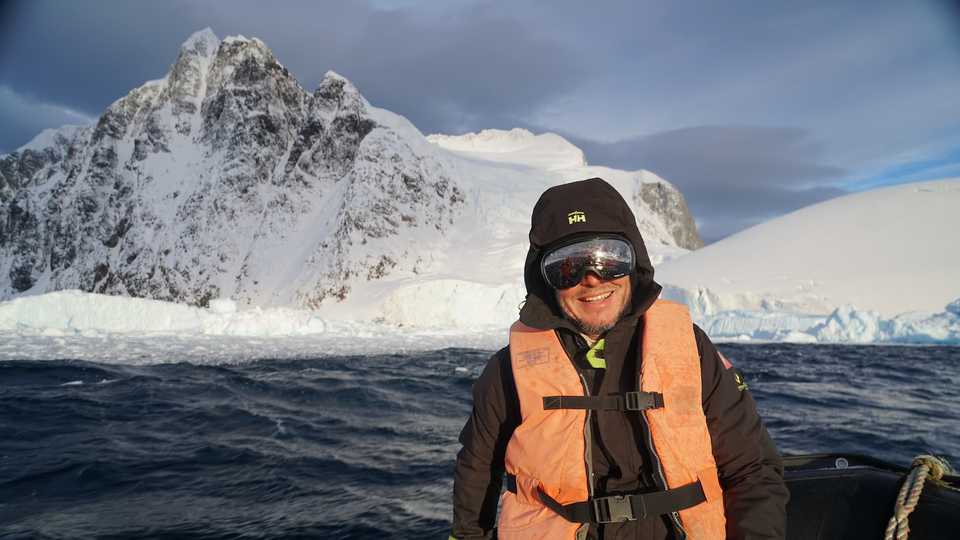
We’ve started to head up from the bottom of the planet. Our time on Horseshoe Island and Marguerite Bay has come to an end. But it doesn’t mean that we’re headed home just yet, just that we’ve passed the half way point of this epic expedition. As soon as we lifted anchor, I was overcome by two emotions. First: excitement. As beautiful as Horseshoe Island had been, I was eager to experience another part of this great continent.
Secondly, I was overcome by a sense of nervousness, as I knew that our journey northward would once again take us out to the open seas. And that meant one thing. Sea sickness! Luckily the journey wasn’t as bad as I had expected, and I didn’t have to use any medication as I did crossing the Drake Passage. Oh my. Had I become a true seaman? In all honestly, probably not.
The journey along the western edge of the Antarctic Peninsula was nothing short of magnificent. You may think that an overwhelming abundance of white could lose its appeal after a while. But quite the contrary. Each glacier, each snow-capped mountain was uniquely mesmerising. And without a doubt the highlight of this leg out of the Antarctic Circle was the Lemaire Channel. I was very much looking forward to going to this picturesque spot, especially after our previous passage coming down two weeks ago was hampered by poor visibility. Anchoring just outside the southern entrance of the strait placed us right in the middle of pod of humpback whales. Dozens of tiny dorsal fins were visible all across the bay. These krill-rich waters made it a favourite feeding and resting area for these gentle giants. Many of us had the opportunity to get into zodiacs and get up close and personal with them.
Once again I was overcome with two feelings: absolute amazement being at an arms length from these huge marine mammals and at the same time also wondering what would happen if our closeness agitated them. Would they flick their pectoral flipper or swing their tail, capsizing our comparably tiny boat, throwing us overboard and leaving us bobbing in the frigid waters?
Talking about freezing waters, one of the important scientific research projects being carried out on this expedition is measuring the amount of man made pollutants that have made their way to these pristine waters. Burak Karacik is an ocean engineer with a passion for extreme diving. He enthusiastically has pulled on a dry suit. The expression on my face is that of: how is a dry suit going to keep you warm in sub zero degree Celsius temperatures? No doubt Burak was in his element: joyful, playful and really comfortable in the freezing waters he had plunged into. A curious fur seal even paid him a visit as he collected samples from the water. As beautiful as Antarctica is, I imagine it is one of the most bizarre and surreal places I’ll ever be.










Discussion about this post